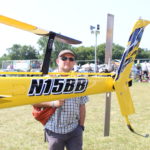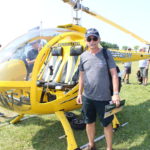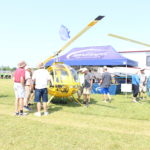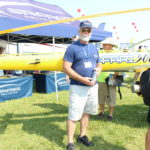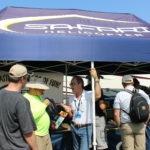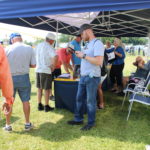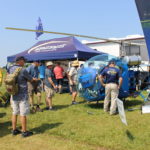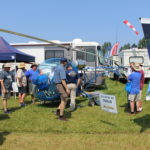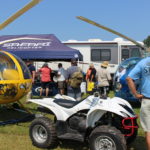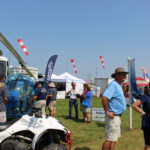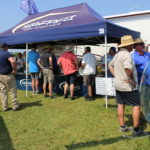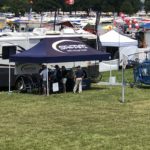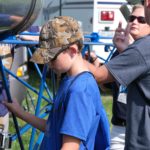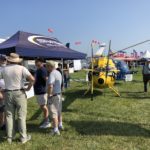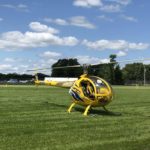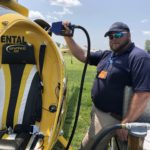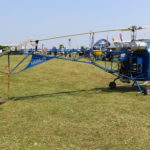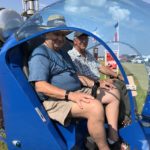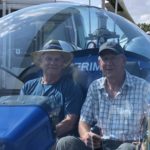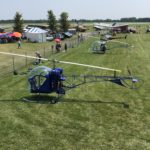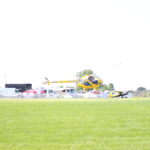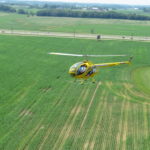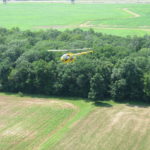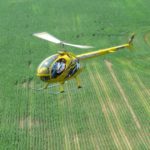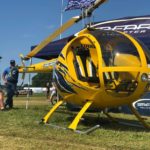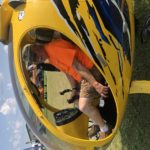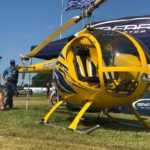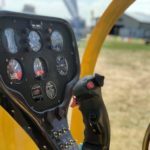Several SAFARI owners have had problems with engine kickback breaking the housing on SkyTec starters. This has been an issue with both the lightweight and high torque models, both 122 and 149 tooth. This has also shown up in Robinson R22 and R44. SkyTec has replaced a number of housings, and has been working to develop, test, and produce a starter which incorporates a clutch to mitigate the kickback of the engine.
The problem may originate with the impulse coupling on the engine. Aircraft engines are generally built with a 20 degree impulse coupling. The starter then causes the engine to fire slightly ahead of the center of the crankshaft revolution. In a fixed wing aircraft, the momentum of the heavy propeller pulls the flywheel past the middle of the revolution and it comes to a harmless stop. In a helicopter (or fixed wing aircraft with very light prop blades), the blades are not engaged and are providing no momentum, so the flywheel “kicks back”, jerking the starter bendix in the wrong direction and breaking the housing.
We believe that replacement with a 25 degree impulse coupling will solve this problem. When starting is controlled by a 25 degree coupling, the flywheel and the crankshaft are moved to center on each starting attempt. If the engine fails to start, the revolution of the flywheel continues in the same direction and comes to a harmless stop.
25 degree couplings have been installed on 3 SAFARI helicopters with good results. Engine kickback has not occurred since the modification.
The SkyTec starter with clutch that will be available soon will also prevent this problem, by buffering the effect on the starter when the flywheel turns back in the wrong direction. If your starter is still intact, you may find that the impulse coupling is a less expensive solution.
We will be glad to help you identify the correct coupling for your particular engine, and will keep you posted regarding availability of the new SkyTec starters.
Our thanks to Dan Suddeth, a SAFARI owner in South Carolina, USA for his efforts to solve this problem.
March 27, 2010 – Additional information has been provided by Steve Michael of Tennessee. Steve received one of the prototype clutch type starters from SkyTec early in their testing. Per Steve:
I read a little about impulse couplings and lag angles. It looks like the entire idea is to have the spark occurring as close as possible (but not before) TDC. If we timed our engine at 25 deg and only have a 20 deg magneto lag then we are firing 5 deg before TDC and causing kick back. I didn’t have any time to look into how to change that lag angle but did see some pictures of them…they look pretty ‘manufactured’ and not adjustable. Hopefully we can contact someone on Monday and just get a different impulse coupling.
http://www.sacskyranch.com/zen.htm states:
http://www.sacskyranch.com/pinpurple.gifIf the engine’s getting hard to start then your magnetos probably need repair. You might also check to see if the magneto part number is correct for your engine. It is quite common for the wrong magneto to be installed on the engine. May magnetos will fit and operate the engine. The difference between magnetos is usually in two areas: impulse coupling lag angle and magneto orientation. Incorrect magneto lag angle causes the engine to kick-back or to be hard to start.
http://www.ytmag.com/jd/messages/293985.html says:
The definition of the lag angle is the difference in timing between the impulse (also called starting) timing and the running timing. The lag angle is a property of the drive cup. During development of an engine, engineers determine the best time for the spark to occur during the compression stroke, and also during starting. Factors deciding the spark times include engine properties, rpm, fuel type, engine size, etc. Once this is decided, that determines the lag angle for the magneto used on the engine. Lag angles can also change as experience is gained with the engine, and that was probably a factor in the case you cite.
Most engines start best when the spark occurs near TDC, and run best when the spark occurs at 20-35 deg Before TDC. The impulse starting system is designed so the same drive cup can delay the spark to TDC during starting and change to the desired running timing after starting. On some magnetos, like the Wico C and XH, the impulse starting timing is adjustable but is fixed on most magnetos. A spark only occurs at two distinct times (impulse and running, or 0 and 30 deg, for example) with a magneto, (unless it has adjustable timing like old magnetos did), while with a distributor you have a complete, continuous range of timing from zero to 20-35 deg. So, a distributor often produces a better idling engine at low rpm as the advance is appropriate for that rpm.
http://www.unisonindustries.com/docs/L-1318G_Text.pdf (pgs. 165-166) doesn’t even list a magneto that has a 20 degree lag…most of theirs are 25 degrees.
http://www.myrv10.com/N104CD/maintenance/20081108/index.html



